Dead Cell Makeup Deep Red - Higher Retention than PI

Dead Cell Staining (Deep Red)
- Dye does not leak from dead cells.
- Stock solution can be frozen and stored for 6 months.
- Available in two different colors.
-
Product codeC556 Dead Cell Makeup Deep Red - Higher Retention than PI
| Unit size | Price | Item Code |
|---|---|---|
| 100 tests | $288.00 | C556-10 |
Description
The reagent covalently binds to cell surface and intracellular proteins and strongly stains membrane-damaged dead cells. In addition, the dye does not leak after immobilization and permeabilization of cells. The difference in fluorescence intensity between live and dead cells after staining is significant, and dead cells can be easily distinguished and excluded from analysis by flow cytometry.
Manual
Technical info
The distinction and exclusion of dead cells is critical to obtaining accurate data using a flow cytometer (FCM), and in recent years this process has become an increasingly common requirement for publication submissions. Propidium iodide (PI) is used to distinguish dead cells, but immobilization or permeabilization of the membrane causes PI to leak from the cells, making it difficult to obtain accurate data. This reagent has the property of covalently binding to proteins on the cell surface and inside the cells, so the dye does not leak out even after immobilization and permeabilization of the cells. In addition, the difference in fluorescence intensity between live and dead cells after staining is large, allowing FCM to easily distinguish dead cells and exclude them from the analysis.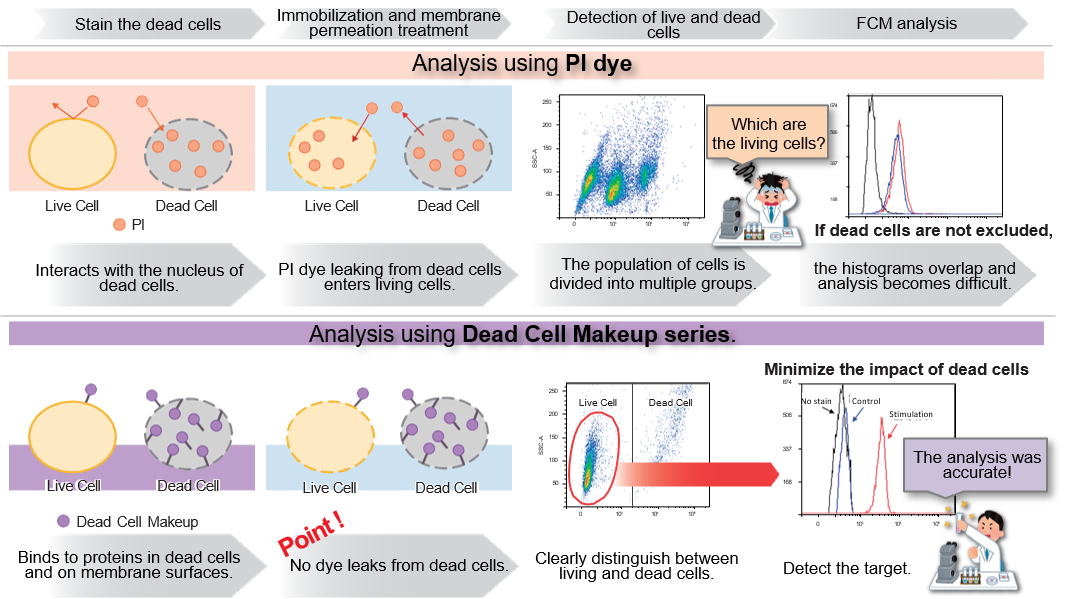
Long shelf life of DMSO stock solutions.
The DMSO stock solutions of this product can be frozen and stored for six months.

Comparison with existing PI method
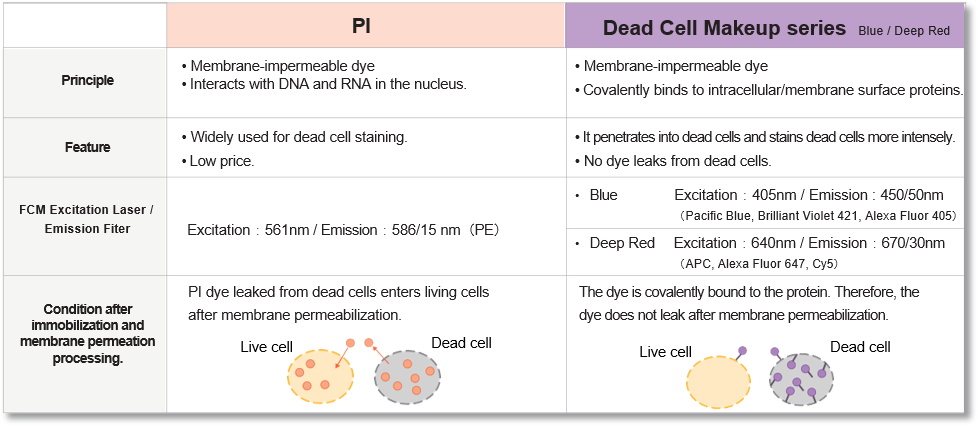
Comparison with existing products
Jurkat cells were stained with Dead Cell Makeup Blue/Deep Red, immobilized, permeabilized, and measured in a flow cytometer. We also performed similar experiments using existing commercially available dead cell staining kits. As shown in the figure below, the results measured with this product were equal to or better than those of existing products, clearly distinguishing between live and dead cells.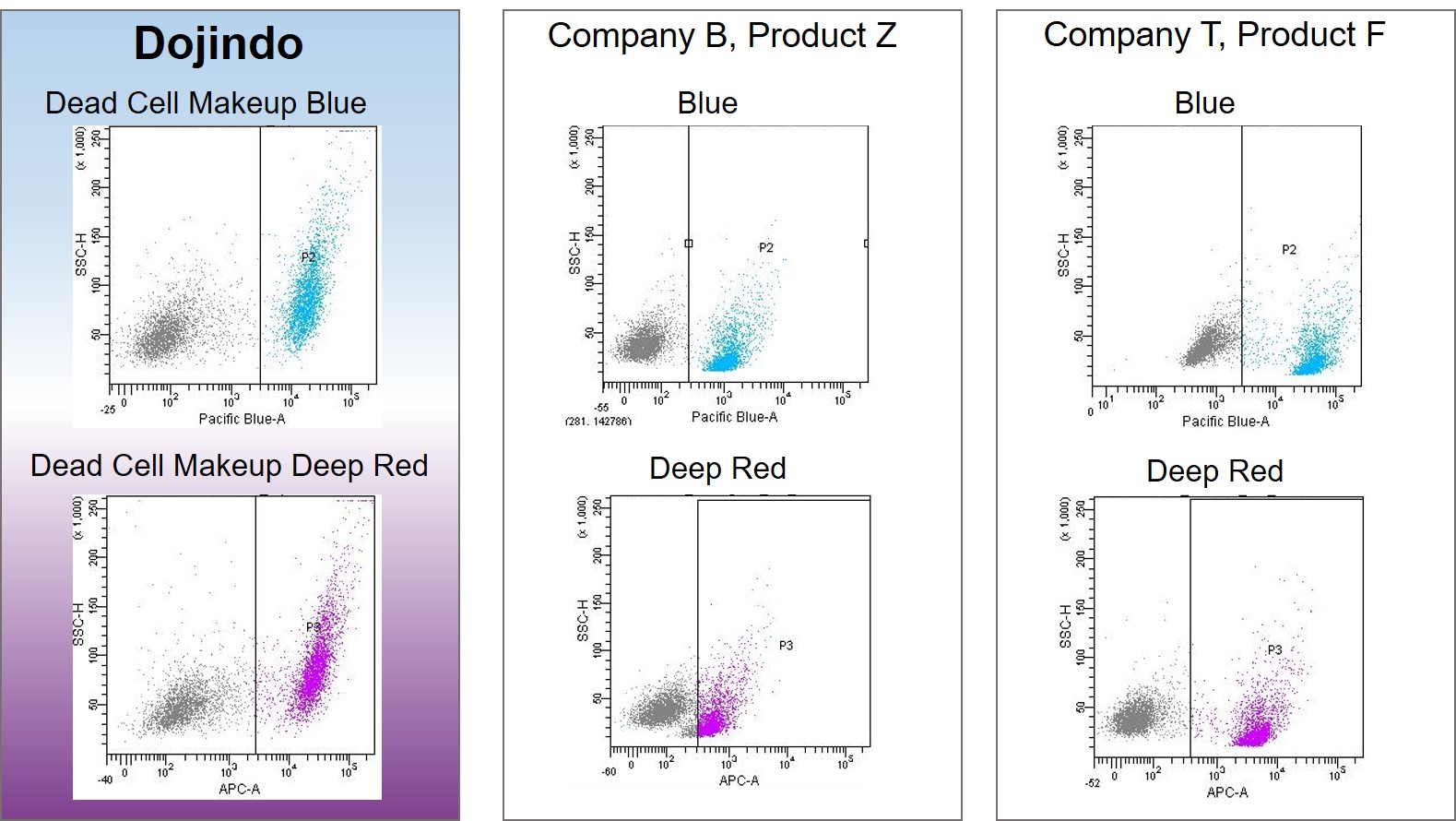
Experimental example: PD-1 detection after induction of MOLT-4 cell exhaustion
MOLT-4 cells were stimulated for 48 hours in RPMI medium containing Ionomycin (500 ng/ml) and PMA (Phorbol 12-myristate 13-acetate, 50 ng/ml). Dead cells were stained with this product, and PD-1 expression was detected by immunostaining (primary antibody: anti-PD-1 mouse antibody, secondary antibody: anti-mouse antibody-Alexa488). The results showed that dead cells and live cells could be clearly distinguished, and that PD-1 expression was predominantly elevated in the stimulated cell group when only live cells were gated.
<Procedure>

<Result>

Q & A
-
Q
Can I measure adherent cells?
-
A
Adherent cells can also be assayed. Cells should be trypsinized or collected with a scraper to prepare a cell suspension.
-
Q
Does trypsin interfere with the measurement?
-
A
We have experience confirming the effects of trypsin on HeLa cells. We have compared trypsin treatment with the use of a scraper and confirmed that there is no difference in the analysis results in either case.
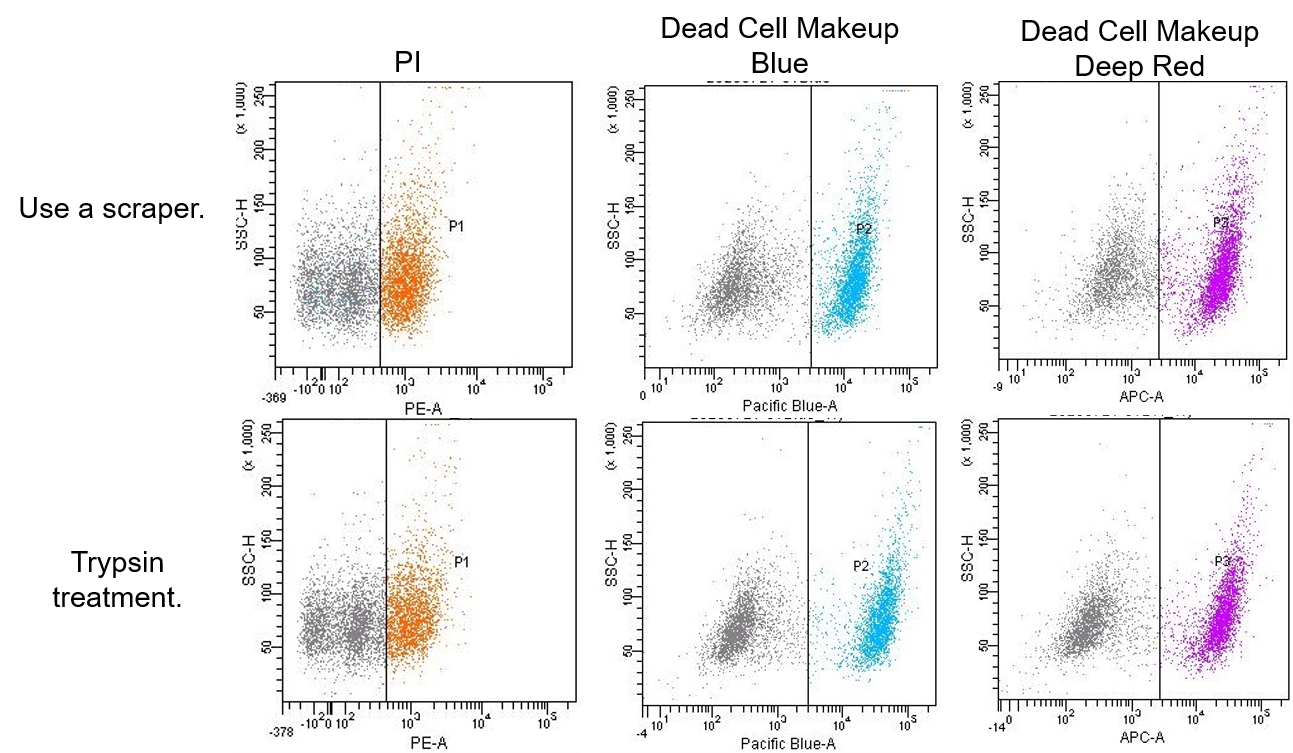
-
Q
Is it possible to observe with a microscope?
-
A
We have confirmed that it is possible to image HeLa cells stained with this dye. The results of imaging HeLa stained with this dye after immobilization and membrane permeabilization are shown below.

-
Q
Is there any cytotoxicity from the staining?
-
A
The Cell Counting Kit-8 was used to evaluate the cytotoxicity of staining in HeLa cells, and the results showed almost no cytotoxicity.
-
Q
Can fixed cells be preserved after staining?
-
A
Not recommended. Since fluorescence intensity decreases with time after fixation, stained specimens should be tested on the same day.
-
Q
How stable is the DMSO stock solution?
-
A
We have confirmed that the product is stable for 6 months when frozen at -20°C.
This product is degraded by moisture; if you are considering long term storage beyond 6 months, use unopened DMSO with low moisture content.
Also, if necessary, divide the product into smaller portions for storage.
-
Q
How do I gate cells?
-
A
The method using a Becton Dickinson (BD) flow cytometer is described.
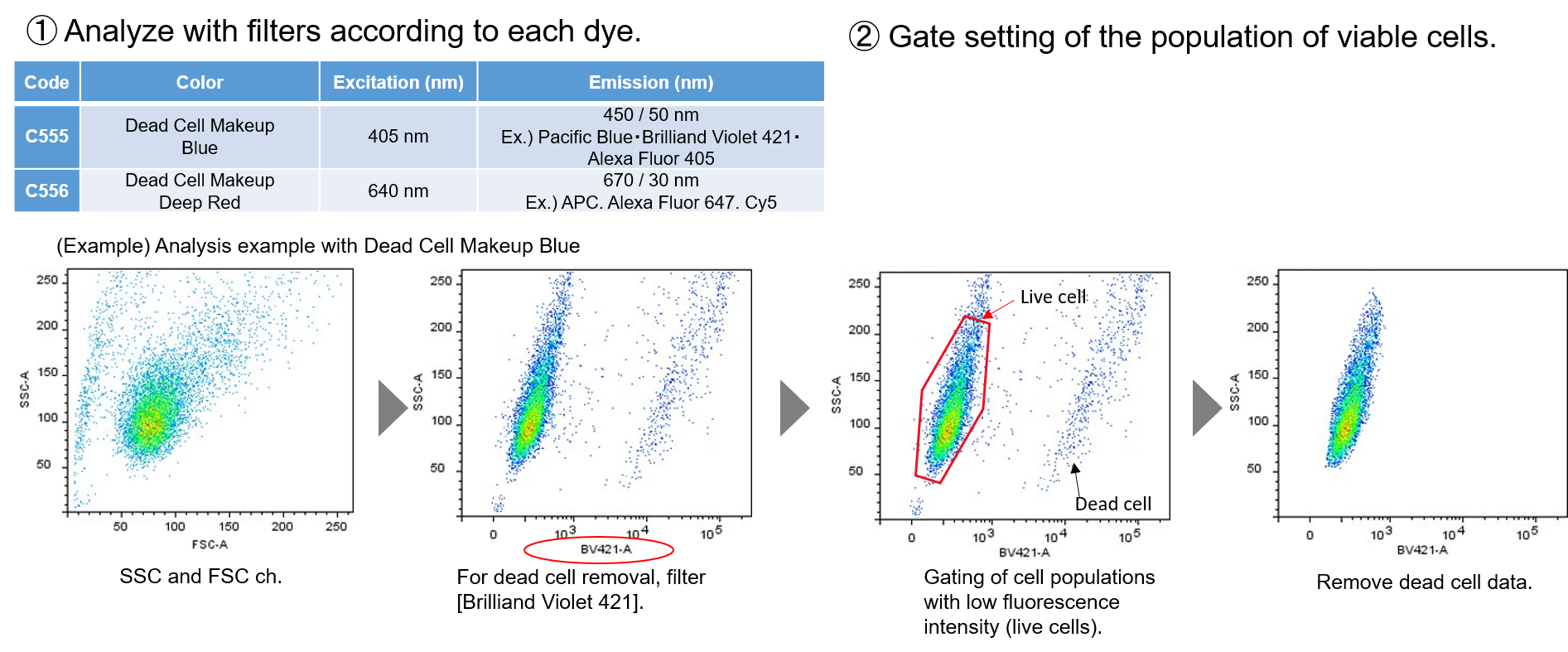
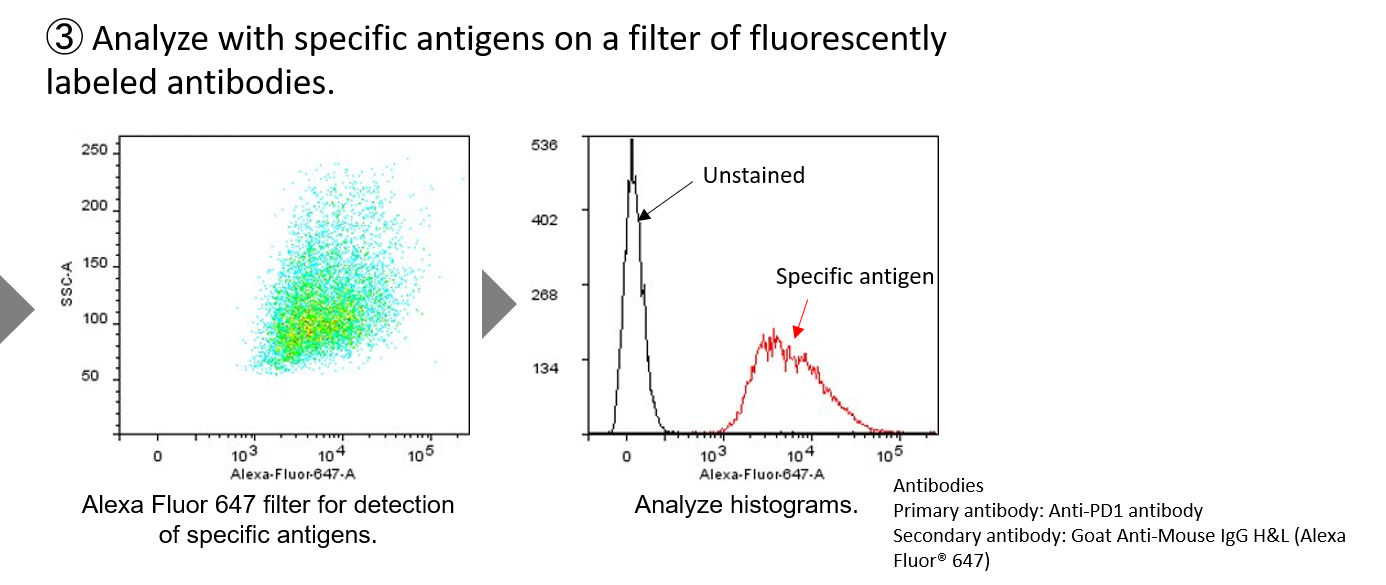
Handling and storage condition
| Purity (Absorbance): | To pass test |
|---|---|
| Confirmation test: | To pass test |
| -20 °C |














